Itemized Hospital Bill Example – Know What You’re Receiving!: There needs to be more clarity about what an itemized hospital bill means and how to use it to your advantage. So, in this blog post, we’ll outline the basics of what an itemized hospital bill is, when you should get one, and how to make the most of its benefits. We’ll also discuss tips for using an itemized hospital bill during your billing process. So read on to learn everything you need about itemized hospital bills!
What is an itemized hospital bill?
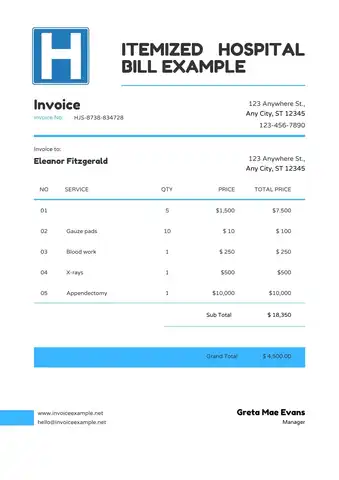
An itemized hospital bill template is a comprehensive record of what was done during the visit to the hospital. The items on an itemized hospital bill example may include the following:
- Services received, such as diagnosis and treatment
- Equipment used, such as medical devices or bed sheets
- Expenses for medications, supplements, or other treatments administered during the visit
- Additional charges for special services not typically provided in a regular health care setting (such as CT scans)
Tips for using itemized bill hospital
itemized hospital bill example often need to be clearer and more manageable. But by following these tips, you can ensure you understand what you’re receiving and negotiate payment options accordingly.
- Check for errors: The first step in understanding your hospital bill is checking for errors. Most hospitals will provide a detailed itemized statement listing all charges against particular codes or diagnosis codes. Double-check to verify that the charges correspond with the information on your original medical records and any additional documentation provided by the hospital staff during your visit.
- Clarify charges with the hospital: Once you have verified that the charges listed on your bill match those recorded in your medical record, it’s important to contact the hospital and ask questions about any discrepancies or unclear explanations of billing procedures (for example, why was room charge X applied when attendance wasn’t necessary?).
By asking questions ahead of time, you’ll ensure no unnecessary disputes or misunderstandings later on down the road.
- Know insurance coverage: It’s always a good idea to double-check whether any special benefits apply to items mentioned on your bill (such as Medicare Part D drug coverage). Additionally, inquire about co-payments or other out-of-pocket expenses associated with covered services.
- Negotiate payment options: If one of the billed services isn’t medically necessary, try negotiating a reduced price directly with billing staff before claiming insurance.
Hospital billing process
As you receive your hospital bill, understand all the items included. This will help ensure that you’re receiving the correct amount for services rendered and can take appropriate actions if there are discrepancies.
Patient Registration:
The patient registration process entails capturing personal information (name, date of birth, address) and authorizing treatment by filling out a form or scanning in a photo ID. It’s important to remember to complete this step even if you have yet to receive an actual hospital bill; it’ll help with billing accuracy down the road.
Service Delivery:
Once registered, patients can expect their medical records to arrive within 48 hours, they’ll receive instructions on how to prepare for their visit, and they’ll be able to select from one of several languages when speaking with staff members during their stay.
Charge Capture:
It’s crucial that hospitals accurately capture every charge so that payments can be processed as quickly as possible. Charges may include service fees (like doctor visits), facility fees (for using certain amenities like a gym or pool), supplies used during treatment, or lab tests ordered by doctors.
Hospitals use either directly billed codes or ICD-9-CM codes when submitting claims to insurers. The latter code is more detailed and requires additional documentation from healthcare providers, such as faxes or scans.
Claim Submission:
After the charges have been captured, the hospital will submit a claim to the patient’s insurance company for payment. The claim includes the patient’s information, services rendered, and charges.
Insurance Payment: The insurance company will review the claim and determine the amount it will pay. This payment is then sent to the hospital.
Patient Responsibility: If there is a balance after the insurance payment, the patient will pay the remaining amount.
Payment Processing: The hospital will process the payment from the insurance company and any payment from the patient.
Account Follow-Up: If payment is not received within a certain time, the hospital may follow up with the patient or insurance company to ensure payment is received.
Why getting an itemized hospital bill?
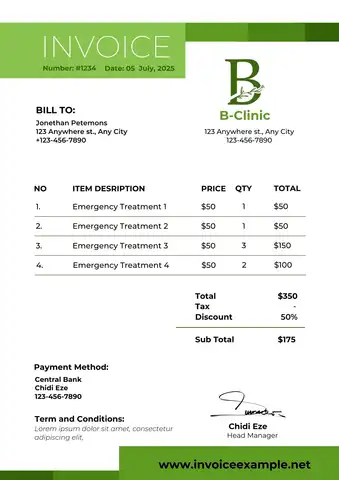
After surgery, it is important to get an itemized hospital bill as soon as possible. This document will help you understand the costs of your surgery more clearly and avoid medical bills that you may need to be made aware of.
There are a few reasons why getting an itemized hospital bill example can be beneficial:
- It can help you understand the costs of your surgery more clearly. An itemized hospital bill example breaks down each cost associated with your procedure, enabling you to make informed decisions about procedures in the future. For example, if there were unusually high charges for anesthesia or lab work, this information might steer you away from having that particular surgery in the future.
- An itemized hospital bill example can help prevent medical bills you may not be aware of. Knowing what services were provided and at what cost makes it easier to identify any potential mistakes or billing errors that occurred during your surgery.
If something went wrong after surgery (for instance, if a surgical tool was misplaced), proving what services were performed and how much they cost could entitle you to compensation from the offending party(s).
- Being able to track expenses post-op is financially and emotionally helpful. After experiencing some major life event, such as going through surgery, many people find it comforting (and motivating )to keep track of all their spending in one place, so they don’t have any surprises down the road.
How can you prepare for and understand?
Healthcare expenses can be very expensive, and it’s important to know what you’re receiving. To ensure you understand the charges included in your bill, it’s important to know which services were provided and when.
It’s also beneficial to identify who was responsible for which services – this will help ensure accurate billing and protect you from any potential claims or disputes down the road.
Lastly, ensure you understand which services were provided and how much they cost. This way, there are no surprises or unpleasant surprises when you receive your hospital bill. With a little preparation, understanding your hospital bills should become easier – making it less stressful for all involved!
Read Also: Standard Payment Terms by Industry
Benefits of itemized bill hospital
Itemized hospital bills are a great way to reduce stress and save money. Here are five of the most important benefits:
- Knowing what you’re receiving is a great way to reduce stress and save money. This allows you to have more control over your finances, which can help improve your relationship with your doctor by improving communication between the two of you.
- It can allow you to get reimbursed for medical expenses that may have been incurred without knowing it, such as out-of-network charges or missed appointments due to illness or injury.
- By keeping track of which bills are being paid for and which ones need reimbursement, itemized hospital bills can help improve relationships with insurers by reducing ambiguities about coverage levels or whether specific treatments were received.
- Better communication is key when working together as a team in healthcare. Clear documentation of expenditures will eliminate misunderstandings on both sides and lead to smoother interactions.
- Finally, having an itemized hospital bill helps patients understand why they owe certain amounts (or receive rebates) from their insurance company and makes negotiations easier.
Itemized Hospital Bill Example
You need to know a few things if you receive an itemized hospital bill.
- The first thing is that only some charges will be included on the bill, and additional charges may not be need to be.
- The next thing to remember is that the amounts charged for each item may vary from case to case. Additionally, some items appear only once on the bill, while others appear multiple times.
- Last but not least, it’s important to understand each of these entries to understand your expenses better and make more informed decisions about how to spend your money.
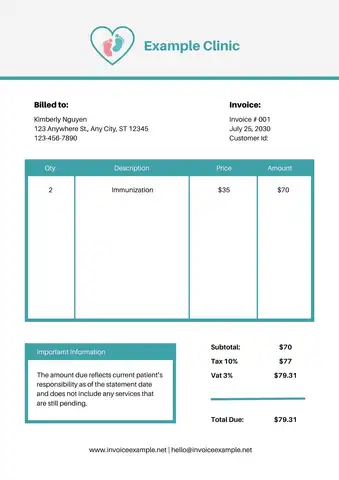
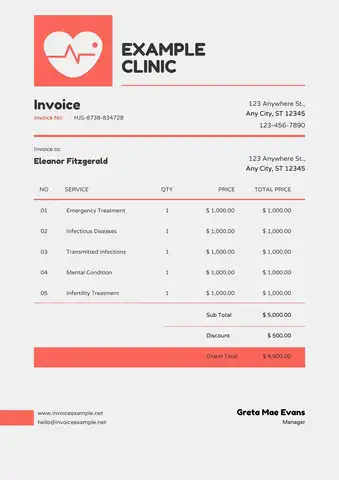
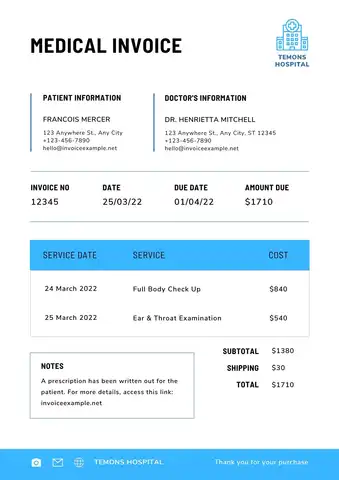
Conclusion
Thank you for reading! In this blog post, we discussed what an itemized hospital bill example is and when you should get one. We also provided tips on preparing for and understanding your hospital bills and the benefits of getting an itemized bill.
Finally, we highlighted the hospital billing process and provided examples of itemized bills. We hope that this article has helped clarify any questions you may have about hospital billing. If not, please feel free to contact us at any time!